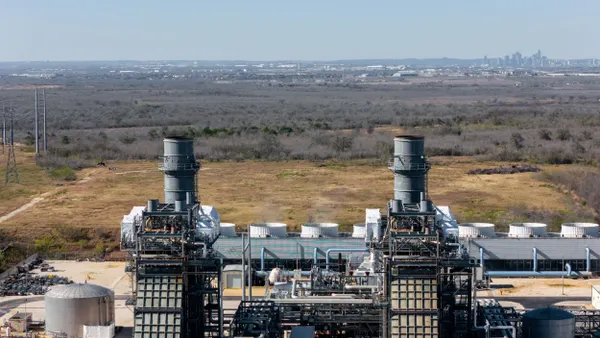Dive Brief:
-
Maryland legislators are scrambling to mitigate the impacts of the controversial minimum offer price rule (MOPR) on state clean energy policy, despite the 2020 legislative session's early conclusion as a result of COVID-19.
-
In comments filed by 18 Democratic legislators to the Federal Energy Regulatory Commission on Friday, lawmakers urge regulators to overturn the MOPR, or at least approve key provisions from the PJM Interconnection's compliance filing that they believe will give wind and solar more equitable access to the market. Another letter sent by over 60 Democratic state legislators urges Maryland regulators to act to ensure the state is able to meet its offshore wind goals of 1,200 MW by 2030.
- The state's legislative session ended over two weeks early because of the novel coronavirus pandemic, putting states in an even more difficult position than they'd already been in, Delegate Lorig Charkoudian, D, who led the Friday effort, told Utility Dive. "It's a very difficult place to be as a state legislature where our hands were sort of already tied, and now [are] further tied that we're not in session."
Dive Insight:
Most PJM stakeholders and observers agree that offshore wind will likely not clear the capacity market. Maryland is particularly concerned about this possibility because its second bid for offshore wind capacity is approaching, and state leaders invested in the resource's growth fear that with a less than guaranteed capacity payment, the state may reduce its potential offshore wind procurements from 1,200 MW to as low as 800 MW.
"The very last thing the federal government should be doing right now is taking an economic engine like offshore wind or solar and making them artificially more expensive to rev up for our communities," Maryland House of Delegates Economics Committee Chairman Dereck Davis, D, said in a statement. "As we face a pending recession, we need to be able to protect our rate-payers and embrace the jobs that can be created in the renewable energy sector."
But there is one potential avenue left for the state to save the second offshore wind bid, said Charkoudian. Legislators are urging the state's Public Service Commission to develop a contingency bid that would allow developers to propose different capacity bids contingent on whether they are bidding into a market subject to the MOPR rule. The intent is to buy the state more time to develop a more permanent fix before projects actually begin development.
"We're cautiously hopeful that there'll be a solution to capacity payments three years from now, when construction might actually start," said Charkoudian.
Potential solutions could stem from legal challenges, the creation of a fixed resource requirement or some other new state-developed framework, she said. But although regulators were open to the idea, they were unsure whether the Maryland's Clean Energy Jobs Act passed last year, which calls for a 50% renewable portfolio standard by 2030 and includes a 1,200 MW carveout for offshore wind, gave the PSC that kind of power.
"I had some conversations with the Public Service Commission, and they seemed to think that it was possible, but that that was not clear in legislative intent. And so the idea behind getting several of my colleagues to sign on to a letter was to make it clear that our intent was at least 1200 MW," said Charkoudian.
The Maryland PSC is still reviewing the letter, a spokesperson told Utility Dive.
The other letter submitted by Democratic leadership on the Senate Finance Committee and House of Delegates Economics Committee asks FERC to approve specific pieces of PJM's compliance filing, issued in March. Clean energy interests widely applauded the filing as an attempt to mitigate some of the potential harms of the MOPR, including adjusted floor prices that make wind and solar more competitive in the capacity auction than they would have been without the adjustment. However, the floor prices will still likely prevent storage and offshore wind from being competitive, the comments note.
"[T]he default floor prices for offshore wind and storage are so far above recent clearing prices, that even resource-specific floors reflecting project-specific financial data are unlikely to be low enough to allow the project to clear," legislators wrote. "These resources will still be built pursuant to state law, yet Maryland consumers will not be allowed to benefit from their capacity value, instead being forced to buy unneeded capacity through PJM's auction."
PJM still has to issue its second compliance filing, in response to FERC's April decision to uphold the order with some clarifications.
"Like with our previous compliance filing, we are soliciting extensive stakeholder input," PJM spokesperson Jason McGovern told Utility Dive in an email.
The grid operator also noted MOPR is not expected to harm resources in the short-term based on the contents of its initial compliance filing. But in the longer term, PJM says there is risk to offshore wind and potentially other resources.
"Most state policies associated with offshore wind look further out, and we've stated previously that the MOPR decision does not present a long-term, durable solution for the capacity market, and especially offshore wind," said McGovern.
"We hope to engage stakeholders on what a longer-term solution could look like for the capacity market. And in the near term, we continue to work with states to help them advance their offshore wind endeavors," he said.














